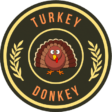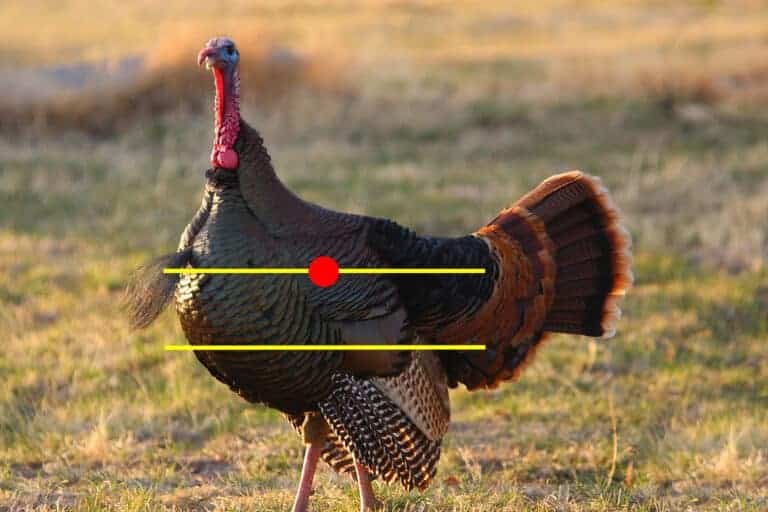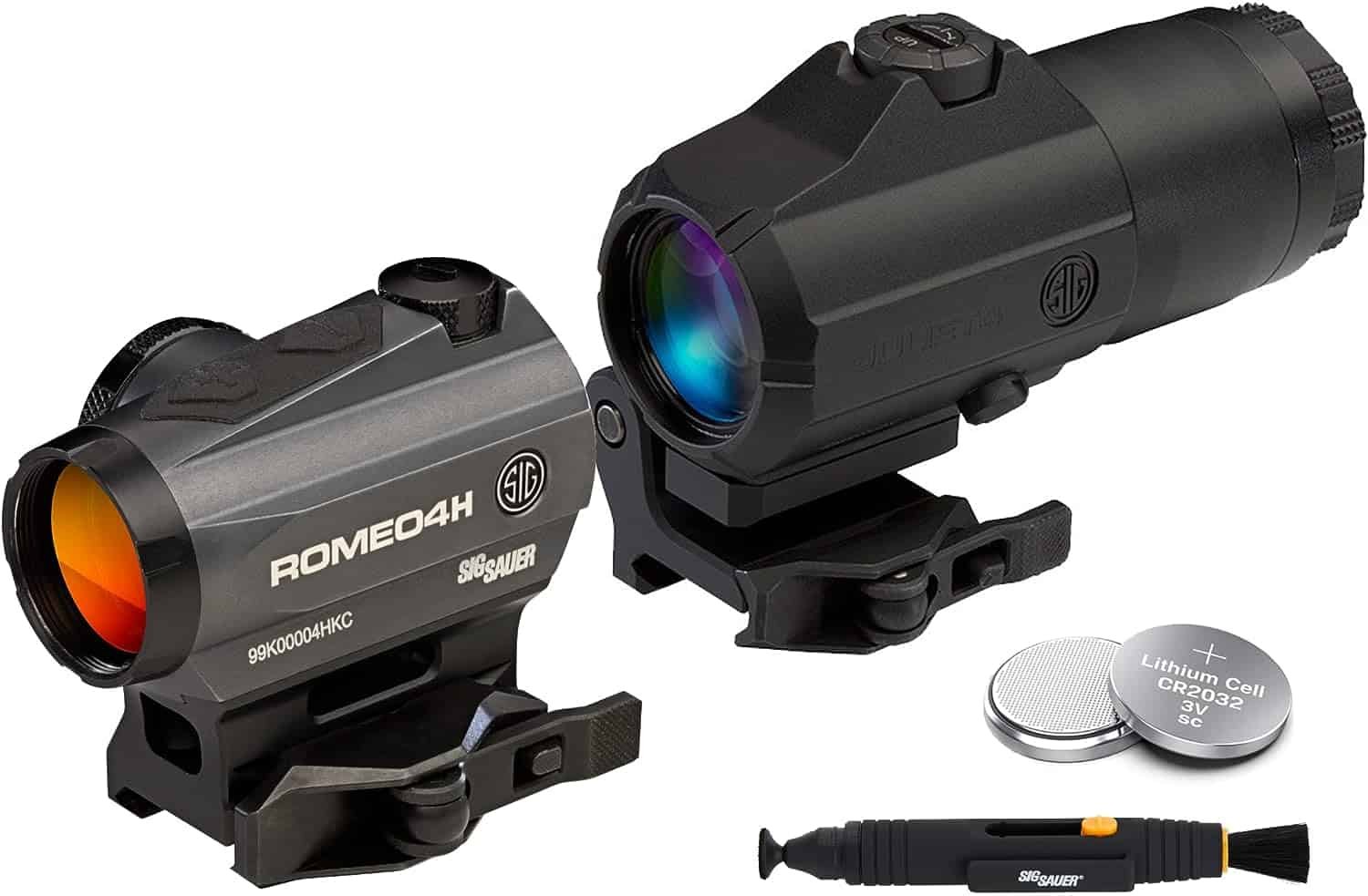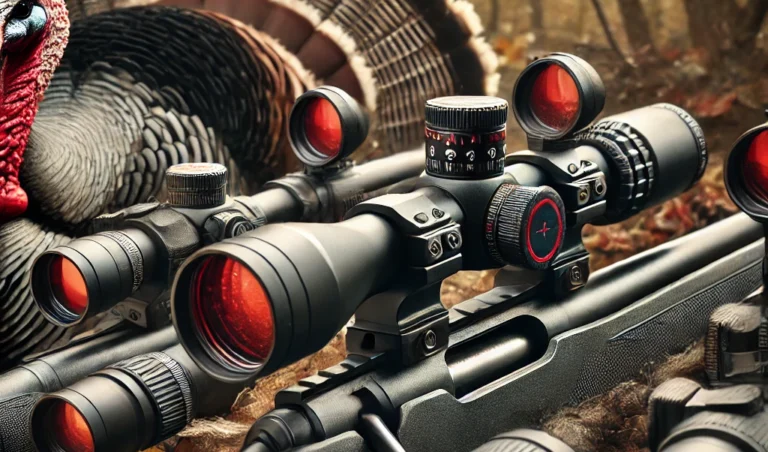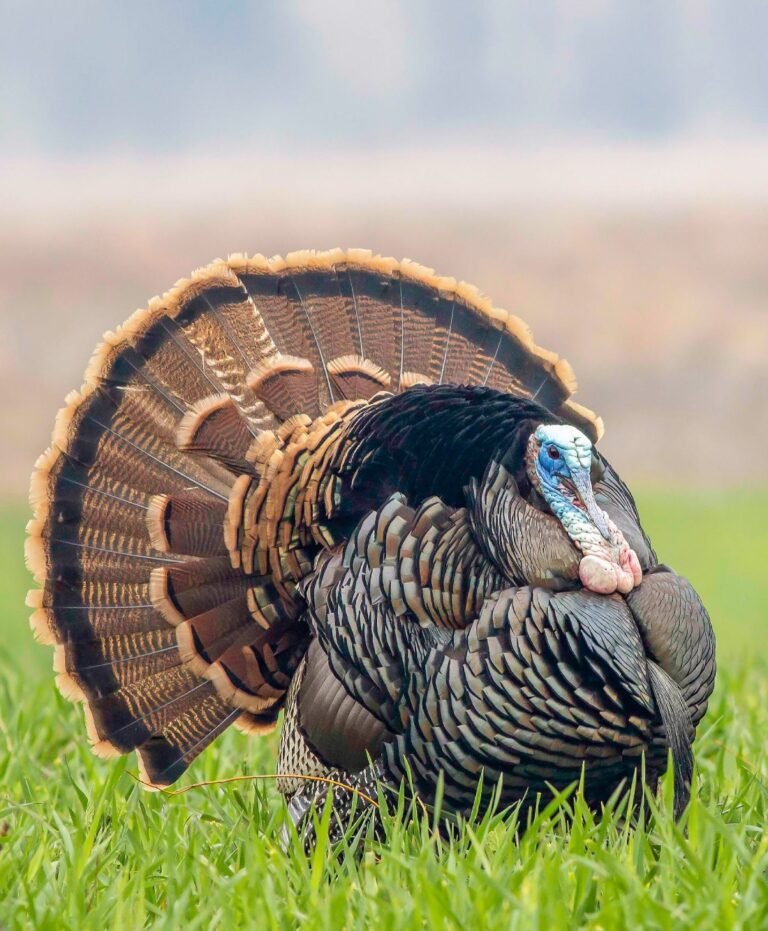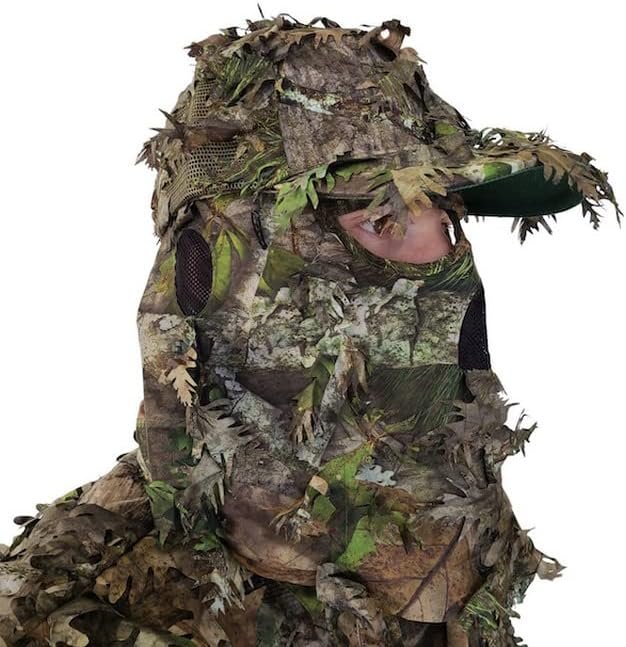Turkey Hunting Gear List: Powerful Tips for 2024
Hey there, fellow turkey hunters! It’s Jimmy here, back with another post to help you bag that big tom. I’ve been chasing turkeys for over 30 years now, and let me tell you, having the right gear can make or break your hunt. We’ve got your turkey hunting gear list for all time.
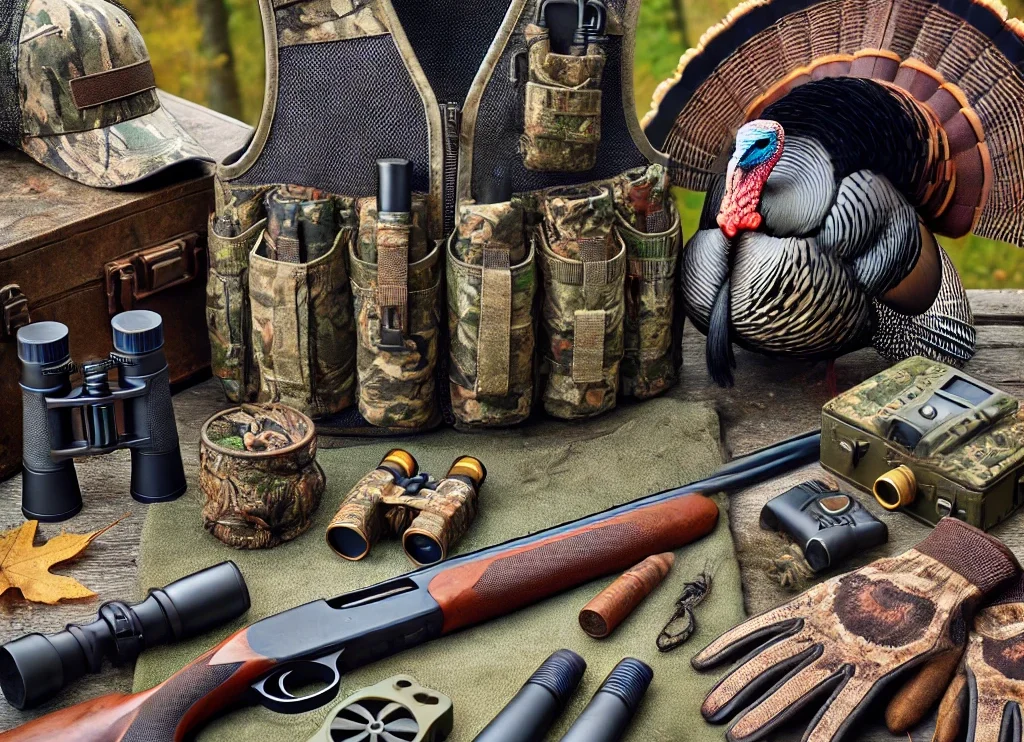
I remember my first turkey hunt as if it were yesterday. I went out more enthusiastically than sense and returned with nothing but mosquito bites and a bruised ego.
But you know what? That day lit a fire in me that’s been burning ever since. Over the years, I’ve fine-tuned my approach, figured out what works and what doesn’t, and bagged more turkeys than I can count.
In this post, we’ll cover everything from the camo on your back to the calls in your vest. I’ll tell you what’s worked for me and why. By the time we’re done, you’ll have a solid idea of what to pack for a successful hunt to hunt turkeys.
Dress for Success: The Turkey Hunter’s Wardrobe
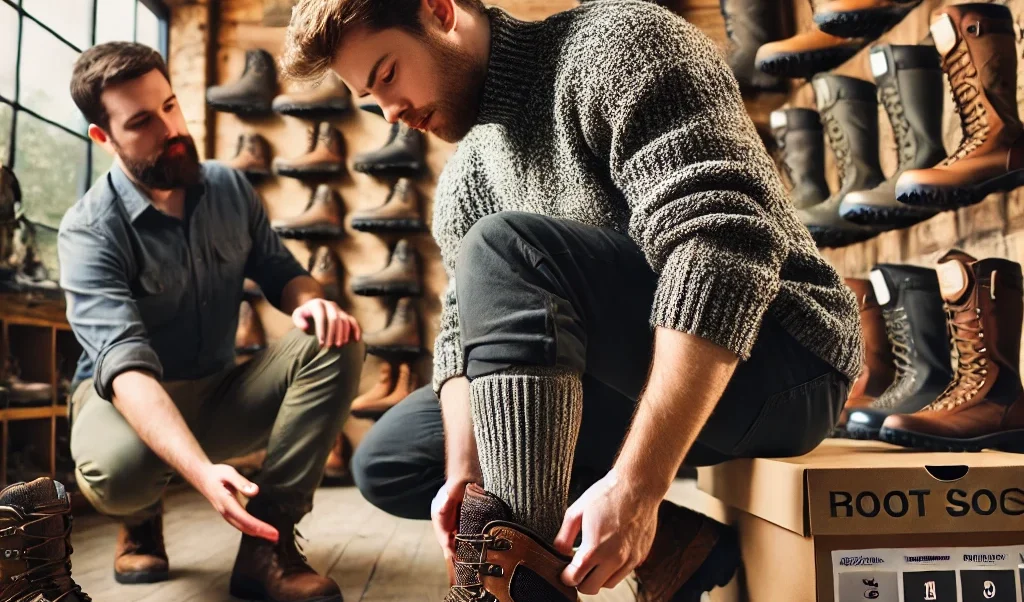
Let’s start with the basics – what you’ll wear in the turkey woods. Some of you might think, “It’s just clothes, Jimmy. What’s the big deal?” But trust me, folks, the right duds can make or break your spring turkey hunting.
Camouflage: Blend In Like a Pro
First things first – camouflage is essential when hunting wild turkeys. Turkeys have eyesight that’d put an eagle to shame. They can spot the tiniest bit of movement from a country mile away. It would help to cover yourself from head to toe in good camo.
I prefer patterns with a mix of brown, green, and gray. These colors match most spring woods pretty well. But here’s a pro tip: take a walk in your hunting spot before the season and see what the trees and brush look like. Then, pick a camo pattern that matches. It might sound overkill, but trust me, it makes a difference.
Remember to cover your face and hands, too. I use a mesh face mask and thin camo gloves. They keep the bugs off and hide any shine from my skin.
Layering: Be Ready for Anything
Now, let’s talk about layering. Most turkey hunters know that spring weather can be trickier than a tom with hens. It might be freezing when you head out before dawn, but you could be sweating bullets by mid-morning.
Here’s what I do:
Base layer: A lightweight, moisture-wicking shirt and pants. This keeps you dry when it’s warm.
Insulating layer: A fleece jacket or vest. Easy to take off if you get too warm.
Outer layer: A light, waterproof jacket. This will keep you dry if it rains and block the wind.
Remember, you want quiet clothes —no noisy fabrics that’ll spook a turkey when you move!
Footwear: Happy Feet, Happy Hunter
Last but not least, let’s talk boots. You want something comfortable, waterproof, and with good ankle support. I like a pair of 8-inch boots with a soft sole. They’re great for long walks and sitting still for hours.
If you’re hunting in snake country, consider snake boots. Better safe than sorry, I always say.
Don’t Forget the Extras
Here are a few more things to remember:
A good hat with a brim to shade your eyes
Thick socks to keep your feet comfy
A pair of light gloves for calling (separate from your camo gloves)
Choosing Your Turkey Thumper: Guns and Ammo
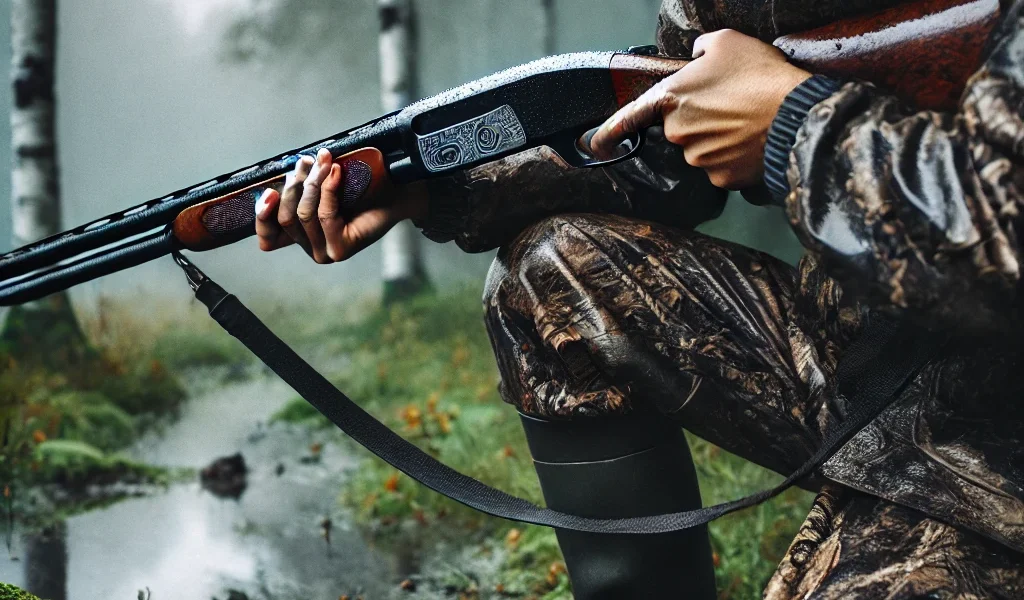
Shotguns: Your Trusty Turkey Taker
When it comes to turkey hunting, a shotgun is your best friend. Now, I know some folks out there use bows and more power to them, but for most of us, a good shotgun is the way to go. However, bowhunting turkeys require specialized equipment like turkey blinds and distinct strategies, making it a unique and challenging experience.
I’ve been using a 12-gauge for years, and it’s never let me down. It’s got the power and range you need to bring down a big tom. If you’re on the smaller side or looking for less recoil, a 20-gauge can do the job, too. Remember, the smaller the gauge, the closer you must be to your target.
Here’s what to look for in a turkey gun:
Short barrel (21-26 inches): It makes maneuvering in the woods easier.
Camouflage finish: Helps keep your gun hidden from those sharp turkey eyes.
Sights or scope: Helps with accuracy, especially in low light.
Chokes: Tighten Up That Pattern
Now, let’s talk turkey chokes. A choke is that little piece you screw into the end of your barrel. It tightens your shot pattern, giving you more range and accuracy. You want a tight pattern for turkeys, so go for a full choke or even an extra-full turkey choke.
I always pattern my gun before the season starts. I shoot at a turkey target to see how my gun and choke combo perform at different distances. Trust me, it’s worth the time and shells to know exactly what your gun can do.
Ammunition: Choose Your Shot Wisely
Alright, let’s talk turkey loads. You want a heavy shot that’ll bring down a turkey at a good distance. I usually go with #4, #5, or #6 shot. The lower the number, the bigger and heavier the pellets.
Here’s a pro tip: Try different brands and sizes to see what patterns work best with your gun. Every gun is different, and finding the perfect match can up your game.
Tungsten vs. Lead
These days, you’ve got a choice between lead and tungsten shells. Tungsten is heavier than lead, so it hits harder and maintains energy at longer distances. It’s pricier, but if you’re taking longer shots, it might be worth it. Lead works just fine for most hunting situations, though.
Safety First, Always
Remember, no matter what gun or ammo you choose, safety comes first. Always treat your gun like it’s loaded, even when you know it’s not. And for Pete’s sake, be sure of your target and what’s beyond it before you pull that trigger.
Talking Turkey: Mastering the Art of the Call
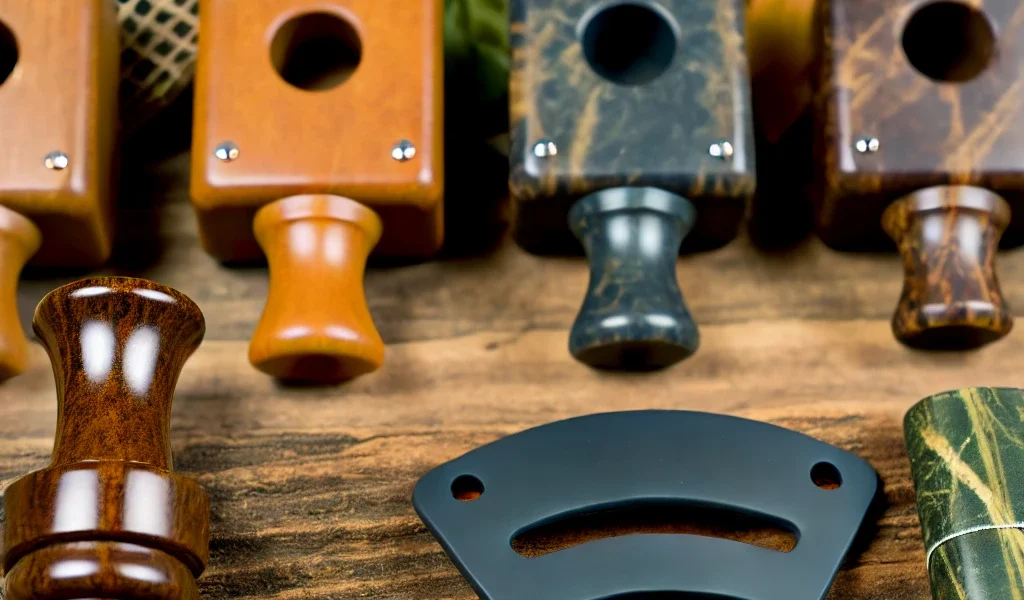
Why Calling Matters
Before we get into the nitty-gritty, let me tell you why calling is so important. Turkeys are social birds. They’re always yakking at each other, and that’s how we can lure them in. A good call can bring a turkey to you, even from hundreds of yards away. It’s like magic, I tell you!
Types of Turkey Calls
Now, there are a bunch of different calls out there, but I’m going to focus on the three main types I always carry with me:
Box Calls
This is my go-to call, especially when I’m starting. It’s simple to use and sounds great. You drag the paddle across the lip of the box, and voila – turkey talk! Box calls are loud, perfect for windy days or when trying to locate birds from a distance.
Pro Tip: Keep your box call dry. A wet box call is as useful as a screen door on a submarine.
Slate Calls (or Pot Calls)
These are my secret weapon for soft, subtle calling. A slate call is a round pot with a striking surface on top. You use a striker (or peg) to make sounds on the surface. They’re great for making soft yelps and clucks when a turkey is getting close.
Remember: Different strikers can make different sounds. I like to carry a couple of options – wood, carbon, and plastic.
Diaphragm Calls (or Mouth Calls)
These take some practice now, but boy, are they worth it. A diaphragm call sits right in your mouth, leaving your hands free. This is a big advantage when that turkey is in sight, and you need to stay stock-still.
Warning: Don’t get discouraged if you first sound like a squeaky door. We’ve all been there. Keep at it; you’ll make sweet turkey music in no time.
Practice Makes Perfect
Here’s the most important thing I can tell you about calling: Practice, practice! Don’t wait until you’re in the woods to start learning. I practice year-round, much to my wife’s chagrin. (Sorry, Helen!)
Start by learning these basic sounds:
Yelp: The most common turkey sound. It’s like saying “kelp-kelp-kelp.”
Cluck: A short, sharp note. Turkeys use it to get each other’s attention.
Purr: A soft, rolling sound. It means “everything’s okay” in turkey talk.
Listen to real turkeys or good-quality recordings. Try to mimic what you hear. And don’t be afraid to ask other hunters for tips. Most of us are happy to help a fellow turkey enthusiast.
Calling Strategies
Remember, calling is as much art as science. Sometimes, turkeys want to hear a lot of calls, and other times, they prefer a coy, hard-to-get hen. You’ve got to read the situation and adjust.
My general rule is to start soft and sparse. If that doesn’t work, I’ll get a bit more aggressive. But always err on the side of calling less rather than more. You can’t un-call a spooked turkey!
Faking Out the Flock: The Art of Turkey Decoys
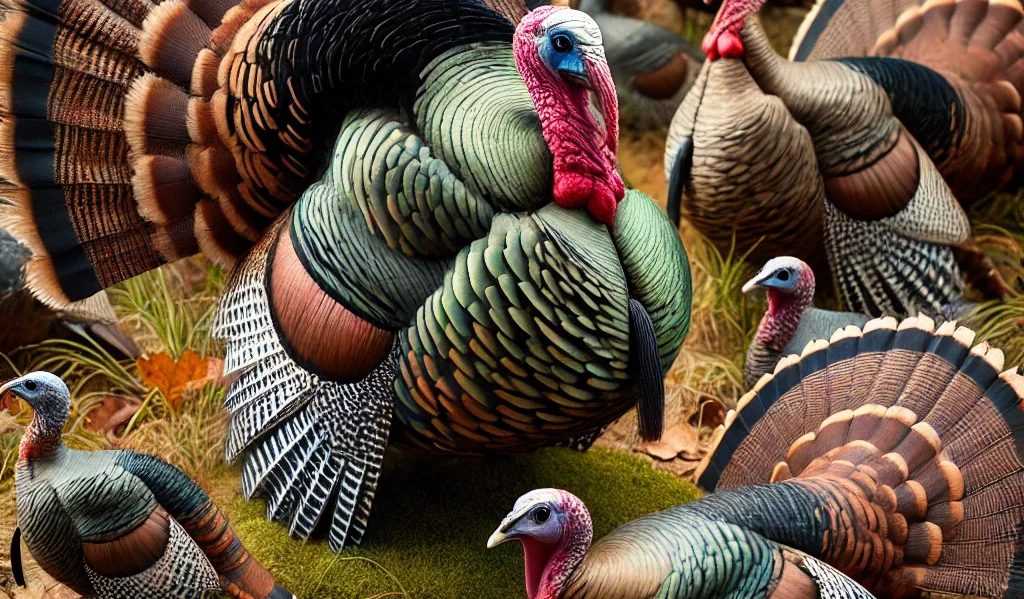
Using decoys can significantly improve your chances of success when hunting wild turkeys. Decoys are designed to attract turkeys by mimicking the appearance and behavior of real birds. By strategically setting up decoys, hunters can lure turkeys into range, making it easier to take a clean shot.
Why Use Decoys?
Decoys are like the icing on the cake of your turkey setup. During turkey season, they give those keen-eyed gobblers something to focus on, making them more likely to come in close. Plus, when a tom’s attention is on your decoy, he’s less likely to spot you.
Types of Decoys
There are a few different types of decoys you might want to consider:
Hen Decoys: These are the most common and can be used alone or in combination with other decoys.
Jake Decoys: These are used to provoke a territorial response from a dominant gobbler.
Strutter Decoys: These are larger and more intimidating, often used to challenge a dominant gobbler.
When setting up your decoys, having a well-equipped turkey vest can enhance your hunting experience by providing space for essential gear and ensuring ease of movement.
Hen Decoys
This is your bread and butter. A hen decoy can attract both toms and other hens. I always have at least one hen in my setup. Look for one in a relaxed, feeding position – it conveys that everything’s calm and safe. Having the right gear, like turkey vests with ample storage, can make carrying and setting up your decoys much easier.
Jake Decoys
A Jake is a young male turkey. Some toms will come running to drive off what they see as competition. But be careful – in areas with lots of hunting pressure, a jake decoy might scare off more birds than it attracts.
Tom Decoys
These are full-strut male decoys. They can be deadly effective, especially during peak breeding season when toms feel territorial. But use them with caution – they can also intimidate less dominant birds.
Setting Up Your Decoys
Here’s how I like to set up my decoys:
Distance: Place them about 20 yards from your hiding spot. This brings the turkey in close enough for a good shot but not so close that they’ll spot you.
Visibility: Make sure the decoys are visible from a distance. There’s no point having them if the turkeys can’t see them!
Positioning: Face your decoys at about a 45-degree angle to your hiding spot. This way, when a tom comes in to challenge your decoy, he’ll present you with a good shot.
Numbers: Less is often more. I usually use just one or two decoys. My go-to setup is a single hen or a hen and a jake.
When to Use Decoys (And When Not To)
Decoys can be great, but they’re not always the right choice. Here’s my rule of thumb:
Use decoys when:
You’re hunting in open fields or areas with good visibility
It’s early in the season, and toms are actively looking for hens
You’ve got a good setup with plenty of cover for yourself
Skip the decoys when:
You’re hunting in thick woods where visibility is limited
It’s later in the season, and turkeys have been pressured
You’re run-and-gun hunting (moving frequently to find birds)
